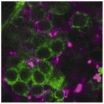(Press-News.org) Women who are night owls share the same high propensity for risk-taking as men, according to a recent study by a University of Chicago professor.
The research suggests that sleep patterns are linked with important character traits and behavior, said study author Dario Maestripieri, professor in Comparative Human Development. Night owls—people who tend to stay up late and wake up late in the morning—are different in many important ways from early risers, he found.
"Night owls, both males and females, are more likely to be single or in short-term romantic relationships versus long-term relationships, when compared to early birds," Maestripieri said. "In addition, male night owls reported twice as many sexual partners than male early birds."
The study, published in the February edition of the journal Evolutionary Psychology, draws on data from earlier research of more than 500 graduate students at the UChicago Booth School of Business. That initial study assessed financial risk aversion among male and female students and found men are more willing to take financial risks than women. Females with high testosterone levels, however, were more similar to males in financial risk-taking, that study found.
Maestripieri wanted to explore why men take more risks than women. He was curious whether sleep patterns have any influence on these tendencies, through an association with differences in personality and in novelty-seeking.
The study participants (110 males and 91 females) provided saliva samples to assess their levels of cortisol and testosterone. Those levels were measured before and after participants took a computerized test of their tendencies for financial risk aversion. The participants also described their own willingness to take risks and gave information about their sleep patterns.
Men had higher cortisol and testosterone levels than women; however, night-owl women had cortisol levels comparable to night-owl and early-morning men.
Maestripieri's study suggests high cortisol levels may be one of the biological mechanisms explaining higher risk-taking in night owls.
Maestripieri explains that some people have chronically high cortisol levels regardless of stress, which is known to increase cortisol for short periods of time. These people have high metabolism, high energy and arousability. Higher cortisol can be associated with higher cognitive function, he said, and some studies show that high-achieving, successful people have high cortisol levels.
More men than women consider themselves night owls, the study found, and men sleep less overall. Maestripieri said preferences for being a night owl or early morning person are due in part to biology and genetic inheritance, but also can be influenced by environmental factors such as shift work or child-rearing. Gender differences in sleep patterns emerge after puberty and become weaker or disappear after women reach menopause, Maestripieri said.
The link between the night-owl tendency and risky behavior could have roots in evolutionary strategies for finding mates, Maestripieri said.
"From an evolutionary perspective, it has been suggested that the night-owl trait may have evolved to facilitate short-term mating, that is, sexual interactions that occur outside of committed, monogamous relationships," Maestripieri said. "It is possible that, earlier in our evolutionary history, being active in the evening hours increased the opportunities to engage in social and mating activities, when adults were less burdened by work or child-rearing." The findings that night owls are less likely to be in long-term relationships and that male night owls report a higher number of sexual partners offer some support to this hypothesis, he said.
Maestripieri said he has replicated the main result of higher risk-taking in night owls with an expanded, non-student population and hopes to publish those findings soon.
INFORMATION:
Night owls, unlike early birds, tend to be unmarried risk-takers
2014-04-01
ELSE PRESS RELEASES FROM THIS DATE:
Like hand-washing, blood transfusions linked to infections
2014-04-01
Blood transfusions are among the most common treatments for hospitalized patients nationwide, but doing them less often reduces infection rates by nearly 20 percent, according to a study in the Journal of the American Medical Association co-authored by Neil Blumberg, M.D., professor at the University of Rochester School of Medicine and Dentistry.
As director of transfusion medicine and the blood bank at UR Medicine, Blumberg for more than 25 years has been investigating how to make blood transfusions safer. The JAMA study is the first to show conclusively, through a study ...
A protein could be a key weapon in the battle of the bulge
2014-04-01
Bethesda, MD (April 1, 2014)— More than one-third of people in the US are obese. Obesity and its related health problems—including high blood pressure, high cholesterol, diabetes, insulin resistance, and belly fat—affect so many, yet effective treatments are very few. In a new study, Simon Musyoka Mwangi and colleagues tested whether higher levels of a certain protein help fight the weight gain and health problems caused by eating the wrong foods.
Glial cell line-derived neurotrophic factor—or GDNF for short—is a protein integral to keeping the body's systems in balance ...
Adult tonsillectomy complications and health care expenses
2014-04-01
A study released today of 36,210 adult tonsillectomy patients finds that 20 percent will have a complication, offering valuable new insights to a decades long discussion. The study, featured in the April 2014 issue of Otolaryngology—Head and Neck Surgery, examines the prevalence of complications in adult tonsillectomies and the impact on health care expenditures.
"Researchers have been examining variation in tonsillectomy for years," explained corresponding author, Dennis Scanlon, PhD. "Yet most research has been documented in pediatric populations. Much less is known ...
Deforestation of sandy soils a greater climate threat
2014-04-01
Deforestation may have far greater consequences for climate change in some soils than in others, according to new research led by Yale University scientists — a finding that could provide critical insights into which ecosystems must be managed with extra care because they are vulnerable to biodiversity loss and which ecosystems are more resilient to widespread tree removal.
In a comprehensive analysis of soil collected from 11 distinct U.S. regions, from Hawaii to northern Alaska, researchers found that the extent to which deforestation disturbs underground microbial ...
Researchers identify similarities between HIV/AIDS and opioid addiction epidemics
2014-04-01
(PROVIDENCE, R.I.) – There are important parallels between the early years of the HIV/AIDS epidemic and the current epidemic of opioid addiction - ones that could trigger a significant shift in opioid addiction prevention, diagnosis and treatment.
These are the findings of a comparative review of HIV/AIDS and addiction by researchers Josiah D. Rich, M.D., M.P.H., director of the Center for Prisoner Health and Human Rights, based at The Miriam Hospital; Traci C. Green, Ph.D., MSc, Department of Emergency Medicine at Rhode Island Hospital and assistant professor of Emergency ...
Study reveals animal research bias in experimentation oversight committee membership
2014-04-01
Denver — Committees that are federally mandated to review, approve, and monitor the use of animals in experiments—called Institutional Animal Care and Use Committees (IACUC)—are dominated by animal research interests, according to a study presented today (Wednesday April 2) at the 2014 Public Responsibility in Medicine and Research (PRIM&R) IACUC Conference in Denver.
Using the federal Freedom of Information Act, researchers from People for the Ethical Treatment of Animals (PETA) and the University of California–San Diego School of Medicine obtained the current IACUC ...
Fruitfly study: Epilepsy drug target implications for sleep disruption in brain disorders
2014-04-01
PHILADELPHIA — A new study in a mutant fruitfly called sleepless (sss) confirmed that the enzyme GABA transaminase, which is the target of some epilepsy drugs, contributes to sleep loss. The findings, published online in Molecular Psychiatry, were led by Amita Sehgal, PhD, head of the Chronobiology Program at the University of Pennsylvania's Perelman School of Medicine. The findings shed light on mechanisms that may be shared between sleep disruption and some neurological disorders. A better understanding of this connection could enable treatments that target both types ...
ED dental care treatment raises access, cost issues for policymakers, Rutgers study finds
2014-04-01
NEW BRUNSWICK, N.J. – The use of emergency departments for dental care – especially by young adults in low-income communities – is presenting policymakers with a challenge, according to a Rutgers report which offers several remedies including expanding hours at the dentist's office.
"Emergency departments are poorly equipped to deal definitively with dental and oral health needs," said Kristen Lloyd, senior analyst at Rutgers' Center for State Health Policy and lead author of the report. "Still, many people seek care in emergency departments for nontraumatic dental ...
Schools have limited success in reducing bullying, new analysis finds
2014-04-01
Two UCLA professors who conducted the most thorough analysis to date of studies on school bullying have found that K-12 schools' efforts to curtail bullying are often disappointing.
The study revealed that schools are trying many different approaches to protect students, and while the more comprehensive programs have been the most effective, they require substantial commitment and school resources to be successful.
"Band-Aid solutions, such as holding one assembly a year that discourages bullying, do not work," said Jaana Juvonen, a UCLA professor of psychology ...
Oxytocin, the 'love' hormone, promotes group lying, according to Ben-Gurion U. researchers
2014-04-01
BEER-SHEVA, Israel…April 1, 2014 – According to a new study by researchers at Ben-Gurion University of the Negev (BGU) and the University of Amsterdam, oxytocin caused participants to lie more to benefit their groups, and to do so more quickly and without expectation of reciprocal dishonesty from their group. Oxytocin is a hormone the body naturally produces to stimulate bonding.
The research was published this week in the Proceedings of the National Academy of Science (PNAS).
"Our results suggest people are willing to bend ethical rules to help the people close to ...

